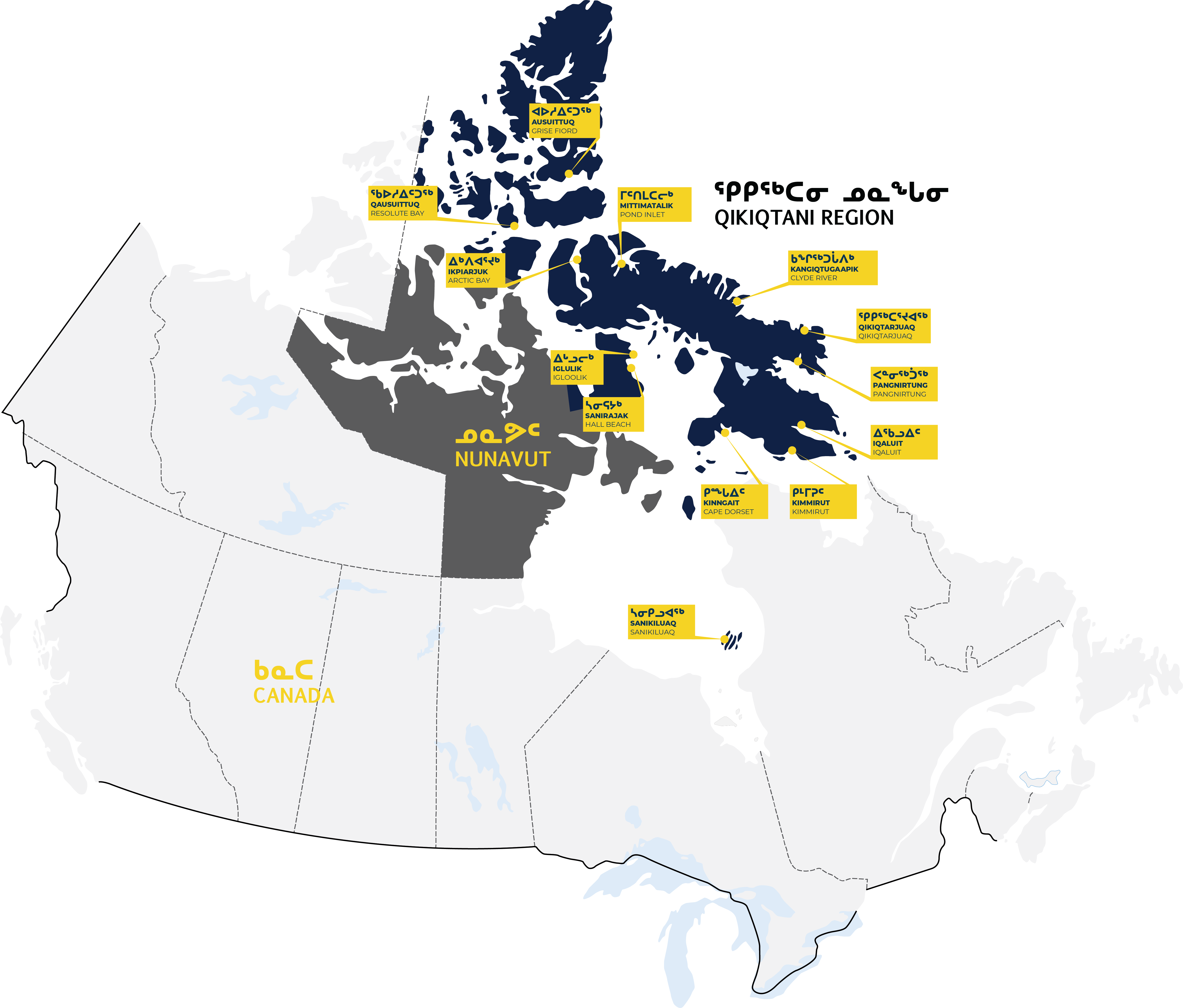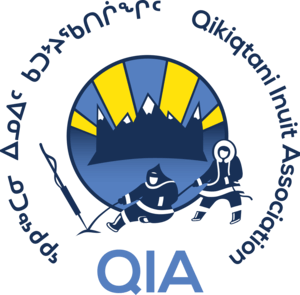About the Qikiqtani Region
The Qikiqtani Region is one of the three regions in the territory of Nunavut
Our Land
Nunavut, which means our land in Inuktitut, is the largest, and most northernly territory in Canada’s Arctic. Nunavut is part of the Inuit Nunangat, the Inuithomeland, it is an expansive territory – the size of Western Europe. It comprises about 20 percent of Canada’s total landmass, 43 per cent of Canada’s coastline, and most of the Canadian Arctic Archipelago.

The Qikiqtani Region
The Qikiqtani Region encompasses 10 per cent of Canada’s land mass – larger than British Columbia and more than twice the size of California.
Nunavut lies above the northern limit of the treeline. Tundra covers almost all of the Qikiqtani Region except for the multitude of rivers and lakes and permanent ice caps at higher elevations on Baffin Island, Devon Island, and Ellesmere Island.
Climate change is impacting the Qikiqtani and other Arctic Regions at an accelerated rate. We are observing changes first-hand in the migration patterns, and abundance of Arctic animals.
Download MapOur Communities
The Qikiqtani Region includes 13 communities from Grise Fiord, in the High Arctic, down to Sanikiluaq, on the Belcher Islands.
The Arctic Circle passes through Baffin Island. The Arctic Circle marks a change in daily patterns of sunlight and darkness. Eight of the 13 Qikiqtani communities lie north of the Arctic circle. These communities experience midnight sun in the summer and polar night in the winter, when the sun does not set, or rise for over 24 hours.
Nunavut, and the Qikiqtani Region, can only be accessed by sea and air. There are no roads linking Nunavut to the rest of Canada or linking Nunavut communities to each other.
Download Map
Our People
Almost 20,000 people live in the Qikiqtani Region, 80 per cent are Inuit. We are culturally resilient and despite our experience with colonialism, our culture and language are still prevalent in our communities. Traditionalg, respect for Elders and cooperation remain central to our community life. Roughly 70 percent of Qikiqtani Inuit report an ability to conduct a conversation in Inuktitut (the Regional language), and our people harvest country foods such as seal, narwhal and caribou to feed our families and communities.
Qikiqtani Inuit are young, the average age is 28. Mothers are younger with two times more children than mothers in other parts of Canada. Eighty-two per cent of Inuit provide and care for children and Elders. This affects how our population interacts with policies, services and programs. QIA designs our programs and campaigns to reflect our demographics.

Since time immemorial Inuit have considered ourselves stewards of the Arctic – protecting its pristine ocean and land. Our understanding of how we fit into the world is based on our close relationship with the land, sea, ice and environment. We are a part of the land and sea.
Inuit rely on wildlife for physical sustenance and cultural renewal and in turn Inuit are the stewards of the marine environment and land dedicated to ensuring its long-term health and sustainability.
In the past century, the colonial policies and practices imposed on Inuit by the Government have endangered our relationship with our environment. Forced relocation, dog slaughters, residential schools, disconnected us from our traditional values and practices.
These experiences with colonial policies and practices have resulted in intergenerational trauma in Qikiqtani communities. QIA advocates to empower Qikiqtani Inuit organizations, communities and families. In this time of reconciliation, we are empowering our communities and reinvigorating our traditions.
